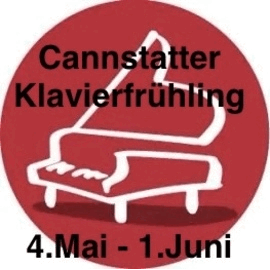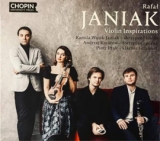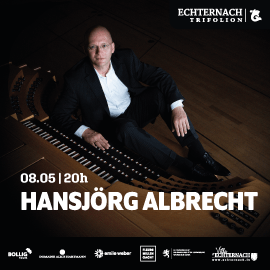Der ebenso wie die Interpreten an der Chopin Universität ausgebildete Komponist Rafal Janiak legt jetzt in seinen späten Mittdreißigern ein Album seiner Kammermusik mit Violine vor. Das jüngste Werk, die Sonate, ist formal in vier Sätze gegliedert, in denen jeweils ein Seelenzustand als abstrakte, aber nicht tonmalerische Idee zugrunde liegt. Verbunden sind die Sätze mit ‘pro memoria‘-Sequenzen, in denen Janiak seinen Lehrer Stanislaw Moryto zitiert und damit ehrt. Das Nocturne für die gleiche Besetzung ist stilistisch am Übergang von Romantik zu neueren Tendenzen zu hören, während das Violin-Solowerk Introduktion und Cantilene barocke Bezüge herstellt. Im Trio, bei dem eine Klarinette mit Violine und Klavier zusammenwirkt, stellt sich im Kompositionsprozess der Bezug zu den Interpreten, in erster Linie der Geigerin und Ehefrau des Komponisten her.
Das Programm der CD ist recht kurz. Insofern hätte es sich vielleicht im Hinblick auf die Besetzung angeboten, etwa noch ‘Aria und Chorale‘ des Mentors Moryto, die im dritten ‘pro memoria’ zitiert wird, mit aufzunehmen.
Die Geigerin Kamila Wasik-Janiak war im Kompositionsprozess nicht nur Inspiratorin, sondern auch Vermittlerin der spieltechnischen Möglichkeiten des Instruments. Ihr sind die vier Stücke also in die Finger geschrieben. Und das hört man der Interpretation, die ein breites Spektrum an emotionalen Farben und technischen Anforderungen mühelos bewältigt, sogleich ebenso an wie die enge Verbindung zu den Stücken.
Doch auch Pianist Andrezj Karalow und Piotr Ptak auf seiner Klarinette beherrschen ihre Stimmen nicht nur, sondern wissen sich mit ansprechender Darstellung als Duo- bzw. Triopartner einzubringen.
Now in his late mid-thirties, composer Rafal Janiak, who like the performers was trained at Chopin University, presents an album of his chamber music with violin. The latest work, the Sonata, is formally divided into four movements, each of which is based on a state of mind as an abstract but not tone-painting idea. The movements are connected with ‘pro memoria’ sequences in which he quotes and thus honors his teacher Stanislaw Moryto. The Nocturne for the same instrumentation is stylistically at the transition from Romanticism to more recent tendencies, while the violin solo work, Introduction and Cantilene, establishes Baroque references. In the Trio, in which a clarinet interacts with violin and piano, the reference to the performers, first and foremost the violinist and wife of the composer, was established in the compositional process.
The program of the CD is quite short. In this respect, it might have been more appropriate with regard to the instrumentation to include, for example, ‘Aria and Chorale’ by the mentor Moryto, which is quoted in the third ‘pro memoria’.
The violinist Kamila Wasik-Janiak was involved in the composition process not only as an inspirer but also as a mediator of the technical possibilities of the instrument. So the four pieces are written in her fingers. And this can be heard in the interpretation, where she effortlessly masters a wide spectrum of emotional colors and technical demands.
But pianist Andrezj Karalow and Piotr Ptak on his clarinet not only master their parts, but also know how to contribute as duo and trio partners, respectively, with appealing performances.






















